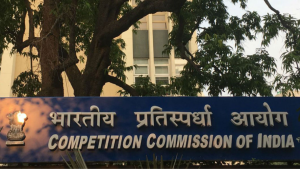

Understanding the Need for Judicial Impact Assessment
Recently, the Chief Justice of India raised the need for conducting studies analysing the impact of proposed legislations before they are made into law. One of the areas of impacts that need to be studied before passing legislation is that on the judiciary. A Judicial Impact Assessment (JIA) is an assessment of the impact caused due to changes in procedural or substantive law, and an assessment of the likely costs to be incurred due to the change. JIAs are beneficial to legislators, members of the judiciary and the society. There are three prominent reasons why undertaking a JIA is vital: first, understanding the likely effect that a law would have on the legal system is important in order to analyse if a law is fulfilling its objective through the ability of enforcement; second, amendments to the law are required to keep pace with changes in society and it therefore becomes important to understand whether laws made at an earlier point in time still serve the purpose for which they were enacted; and third, changes to law often affect the functioning of the justice delivery system, and therefore it becomes important to understand these likely effects to weigh the costs and benefits of any change.
In the Indian context, JIA was discussed in the report titled ‘Report of the Task Force on Judicial Impact Assessment’ (‘Report’). The Report, released in 2008 under the chairmanship of Justice M. Jagannadha Rao discussed two components of legislative change where a JIA framework can be used to foresee the impact of such change, procedural change, and substantive change. The Report discusses JIA study methodologies and synthesizes the study findings. The Report does recognize the need for modelling a JIA if there is availability of data and researching independent variables using economic modelling. It is also important to note that the JIA methodologies will differ depending on whether the JIA is for a procedural change or a substantive change. To elaborate more on what the objectives of a JIA could be, in relation to a change in the procedural or substantive aspects of a legislation, please find below a short synopsis of a JIA methodology.
Synopsis of a JIA Methodology:
- Demand Estimation – Number of cases that are likely to be filed
- While contemplating a change in law, a JIA will identify important characteristics of a law, and identify target population that uses this law.
- Collection and analysis of data to capture awareness of law, accessibility of law, and affordability of law.
- Estimate the judicial resources required
- Identification of cases under the law for which the JIA is mooted. Pursuant to this, time taken for these cases under the law can be calculated stage wise.
- Identification of the factors or independent variables that can have impact on the judicial time and estimate the judicial resources required for solving one unit of a case. This should be understood in relation to the impact on other cases.
An example of an application case study for JIA (decriminalizing Sec 138 of NI Act)
To understand the JIA framework, we can try to apply the same to an existing issue that is suitable for a JIA analysis. The policy debate on whether decriminalization of Section 138 of the Negotiable Instruments Act is useful is one such initiative that has been discussed extensively. This question is being raised in the context of acute pendency of cases under Section 138. It is estimated that around 40 lakh cases pertaining to Section 138 are pending in the system and this problem was noted in the 213th Law Commission Report as well (see here for a detailed analysis of Section 138 cases). Given the existing backlog of cases under Section 138, there is an opportunity for us to employ a JIA study to understand whether decriminalization is a step in the right direction and the impact decriminalization would have.
Decriminalization of Section 138 brings to fore many interesting questions. First, the need to decriminalize should consider the effect of a criminal proceeding on an accused. The criminal procedure ensures that an accused is present at every hearing and this pressure on an accused may impact repayment. The pendency in Section 138 cases can also be due to the accused absconding and hence the cases do not move forward. In civil money recovery cases, ex-parte orders are pronounced, when a party to a proceeding does not appear before the court. The process to decide an accused as a proclaimed offender in a criminal proceeding could be a longer process than an ex-parte declaration given in a civil proceeding. This may also impact the pendency rate as the cases will be continuing and cannot be disposed without the suitable declaration being issued in a criminal proceeding.
Decriminalization will mean existing Section 138 criminal cases transform to civil recovery proceedings. This transformation may have an impact on reducing the number of pending cases. However, it may not result in the enforcement and recovery of money under these cases due to change in the incentives. A civil judgement requires an execution order, and other formal procedure for recovery or to seize assets. Thus, although cases maybe cited as disposed in the judges’ docket, they may still not be adding much force to enforcement in terms of recovering money. Most importantly, there is already a legal alternative to file the existing claim under Section 138 as a civil recovery proceeding instead of a criminal one as prescribed under Section 138. Thus, in the present scenario where Section 138 cases are preferred, there may be factors driving litigants to pursue a Section 138 proceeding. One such factor could be the pressure that a criminal proceeding exerts due to enforcing presence of the accused, that may not be present in a civil case.
Thus, this example shows us that the answering the systemic issues raised by a provision for decriminalization using the JIA model may have some benefits. It will help us understand the advantages and disadvantages to criminalization and decriminalization and whether the same makes a difference in effective disposal of the cases under the legislation.
Conclusion
Currently, there is a dearth of studies on the usage of JIA in India. Although, there have been doubts cast on using JIA methodologies for answering questions regarding planning and allocation of funds to the judiciary, JIA could still prove a useful model for studying the impact of certain kind of legislative changes. With a burgeoning case load before the judiciary, the time is ripe to pave the way for such assessments to ensure our legal and judicial systems do not exacerbate the resulting effects of pendency and delay. With data regarding cases and hearings now being available, it is possible for us to revisit the concept of JIAs. The JIA can help in understanding issues of court capacity, pendency, and more importantly in the case of issues such as Section 138 proceedings, the economic and enforceability impact of a change from criminal to civil proceedings.

Sandhya PR
RECENT ARTICLES


Testing the Waters: Pre-Implementation Evaluation of the 2024 CCI Combination Regulations

Not Quite Rocket Science

Administration of justice needs an Aspirational Gatishakti

-
Rule of Law ProjectRule of Law Project
-
Access to Justice SurveyAccess to Justice Survey
-
BlogBlog
-
Contact UsContact Us
-
Statistics and ReportsStatistics and Reports
© 2021 DAKSH India. All rights reserved
Powered by Oy Media Solutions
Designed by GGWP Design